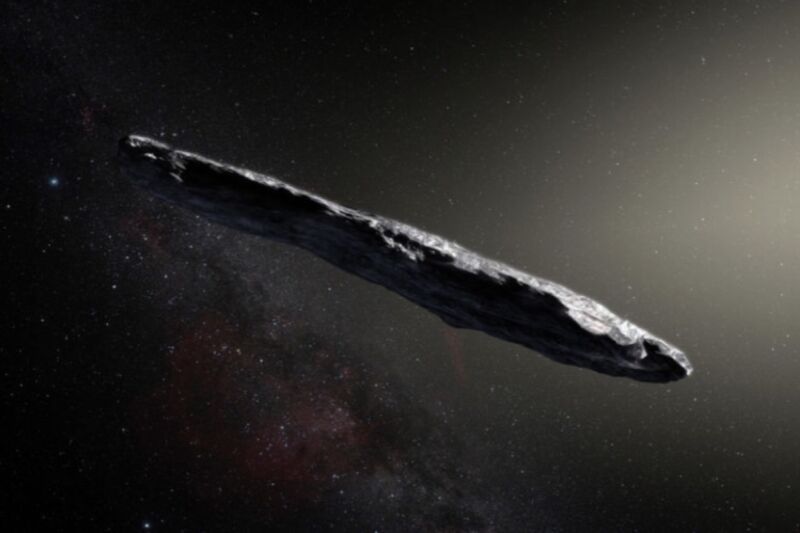Study: ‘Oumuamua interstellar object might be remnant of a “super-Earth”

Enlarge / An artist's impression of 'Oumuamua. A new study based on computer simulations offers a comprehensive theory for how it formed and where it came from, that accounts for the interstellar object's odd characteristics. (credit: ESO/M. Kornmesser)
In late 2017, our Solar System received its very first interstellar visitor: a bizarre cigar-shaped object hurtling past at 44 kilometers per second. Scientists have been puzzling over its origin and unusual characteristics ever since. A new paper in Nature Astronomy offers a new comprehensive model to explain some of the object's oddities. 'Oumuamua, as it is called, may be the fragment of another, larger parent body-a long-period comet or debris disk, perhaps, or even a super-Earth planet-torn apart by tidal forces as it passed too close to its host star.
"Our objective is to come up with a comprehensive scenario, based on well understood physical principles, to piece together all the tantalizing clues," said co-author Douglas Lin of the University of California, Santa Cruz. "We showed that 'Oumuamua-like interstellar objects can be produced through extensive tidal fragmentation during close encounters of their parent bodies with their host stars, and then ejected into interstellar space."
The interstellar object was first discovered by the University of Hawaii's Pan-STARRS1 telescope, part of NASA's Near-Earth Object Observations program to track asteroids and comets that come into Earth's vicinity. The team dubbed it 'Oumuamua (Hawaiian for "messenger from afar arriving first"). Other telescopes around the world soon kicked into action, measuring the object's various characteristics, which turned out to be very odd, indeed. For starters, it was accelerating away from our Sun much faster than could be explained by gravity alone. As Ars' John Timmer wrote in 2018,
Read 10 remaining paragraphs | Comments